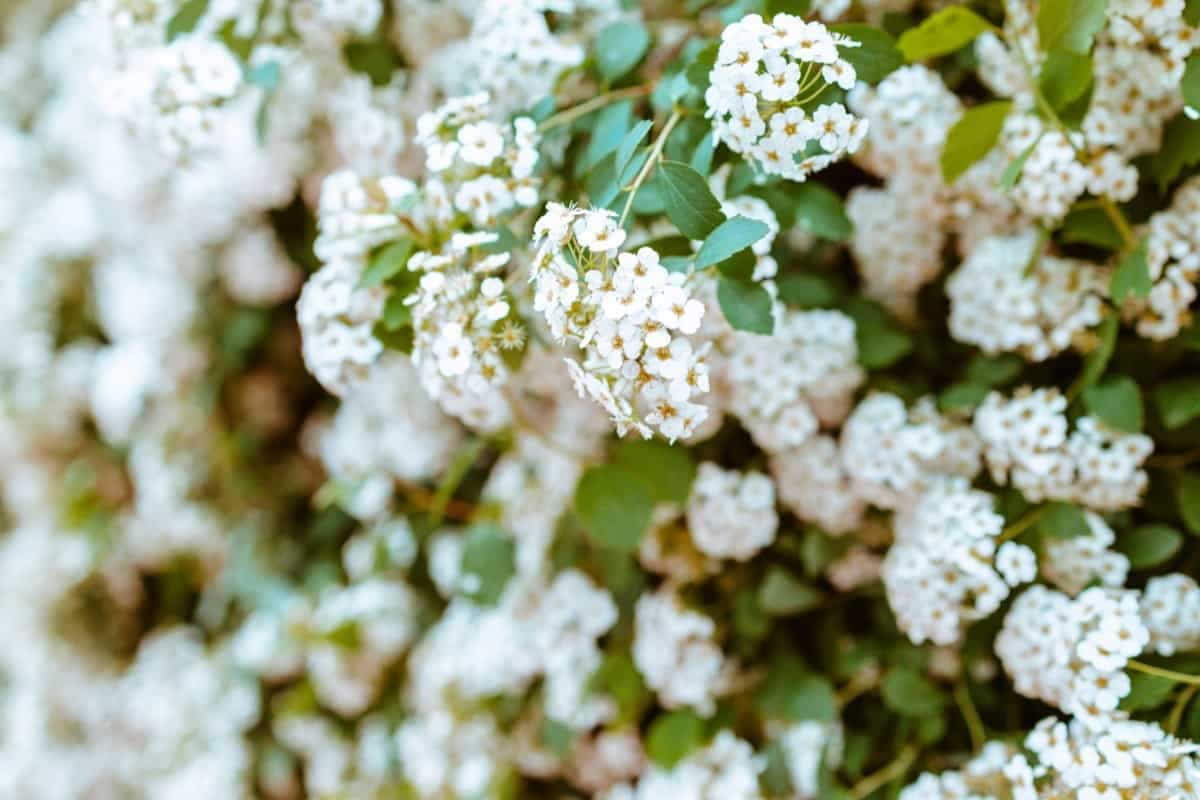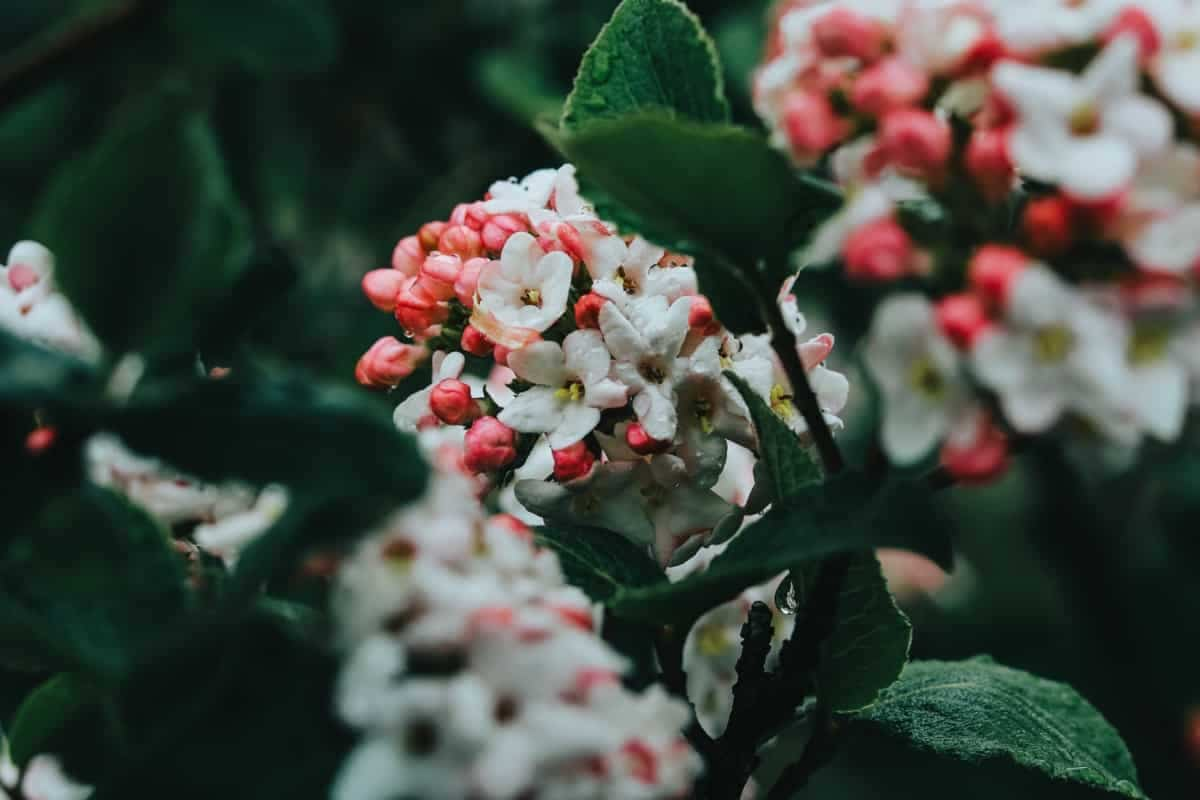Viburnum leaf curl is a common issue faced by many gardeners. Taking care of your plants’ needs through proper maintenance techniques will keep them looking beautiful and ensure their longevity in your garden. Proper watering is essential for preventing viburnum leaf curl and maintaining the overall health of your plants.

How to Treat Viburnum Leaf Curl Naturally
What Causes Viburnum Leaf Curl?
One common cause is improper watering practices – either overwatering or underwatering can lead to leaf curling. It’s important to strike that delicate balance. In addition to water-related issues, insect infestations, and diseases can wreak havoc on your viburnum plants. Extreme temperatures and direct sunlight exposure can also affect leaf curling. Viburnum plants prefer moderate temperatures and partial shade.
When exposed to excessive heat or intense sunlight, their leaves may begin to curl as a protective mechanism. Why are the leaves on my viburnum curling up? Understanding the underlying causes of viburnum leaf curling up is essential for effective treatment.
How to Fix Viburnum Leaf Curl Naturally?
- Neem Oil: One effective method to treat viburnum leaf curl naturally is neem oil. Mix neem oil with water according to the instructions on the bottle and spray it onto the affected leaves.
- Baking Soda Solution: A baking soda is another home remedy for viburnum leaf curl. Mix 1 tablespoon baking soda with 1 gallon of water and spray it onto the affected leaves. This solution can help control fungal infections that may be causing the leaf curl.
- Copper-based Fungicides: Copper-based fungicides are also effective in treating viburnum leaf curl naturally. These fungicides can help control fungal diseases that may be causing the leaf curl.
- Improving Air Circulation: Good air circulation around your viburnum plants can help prevent leaf curling caused by humidity or stagnant air conditions.
- Organic compost: Applying organic compost as a natural remedy for viburnum leaf curl is beneficial because it enriches the soil with nutrients and improves overall plant health.
Neem Oil for Treating Viburnum Leaf Curl
Neem oil has been used for centuries as a natural remedy for various ailments, and it turns out that it can also be effective in treating viburnum leaf curl. This versatile oil is derived from the neem tree. To use neem oil for treating viburnum leaf curl, dilute the oil according to the instructions on the packaging.
In case you missed it: How to Grow and Care for Viburnum Flowers: Planting Instructions

Then, using a spray bottle or garden sprayer, apply a thin layer of the diluted solution onto both sides of the affected leaves. Be sure to cover all areas thoroughly. Neem oil, a natural remedy for viburnum leaf curl, provides an environmentally friendly alternative to chemical-based treatments.
Baking Soda Solution as a Remedy for Viburnum Leaf Curl
- Baking soda, the versatile ingredient in every kitchen pantry, can also be a powerful remedy to treat viburnum leaf curl naturally. Its alkaline nature helps balance the plant’s pH levels and creates an unfavorable environment for fungal growth.
- Mix baking soda (1 tablespoon) with 1 gallon of water to make a baking soda solution. Stir well until the baking soda is fully dissolved. Then, transfer the solution into a bottle for easy application.
- When applying the solution to your viburnum plants, thoroughly coat both sides of the leaves. This will help prevent further infection and promote healthy growth.
Copper-based Fungicides for Viburnum Leaf Curl
These products contain copper compounds that help control fungal diseases, including those causing leaf curl. To use copper-based fungicides, thoroughly inspect your viburnum plants for signs of leaf curl. If you notice any affected leaves, remove them carefully to prevent further spread of the disease. Next, mix the copper fungicide according to the instructions on the product label.
Using a sprayer, apply the solution evenly to both sides of the leaves and stems of your viburnums. Make sure to cover all parts of the plant susceptible to infection. Repeat this process every 7-10 days or as the manufacturer recommends. Excessive or improper application can lead to phytotoxicity (toxicity in plants) and damage to foliage.
Pruning Infected Leaves to Treat Viburnum Leaf Curl
- When you notice curled, distorted, or discolored leaves on your viburnum plants, taking action promptly is important. Pruning infected leaves helps control the spread of disease and encourages new growth.
- Start by inspecting your plant and identifying the affected leaves. Carefully remove these damaged leaves from the plant using clean and sharp pruning shears. Make sure to cut back to healthy tissue to prevent any remaining infection from spreading further.
- Remember that proper sanitation is crucial when pruning infected leaves. Keep an eye out for early signs of stress or disease so that you can address them promptly before they become more severe.
In case you missed it: How to Grow and Care for Viburnum: A Beginners Guide

Proper Watering Techniques for Preventing Viburnum Leaf Curl
- Water deeply: Rather than frequent shallow waterings, give your viburnums a good soak once or twice a week. This encourages deep root growth and helps them withstand dry spells.
- Time it right: Water early in the morning or late in the evening when temperatures are cooler. This allows the plants to absorb moisture before it evaporates.
Improving Air Circulation Around Viburnum Plants
- Good airflow helps prevent moisture buildup on the leaves, reducing the risk of fungal infections and other diseases.
- Prune any overgrown branches or dense foliage blocking airflow to improve air circulation. Remove any dead or diseased branches as well. This enhances air movement and promotes new growth and overall plant vigor.
- Spacing out your viburnums can also help improve airflow between them. Avoid planting them too close together, as this can create a crowded environment where disease-causing pathogens thrive.
- In addition to these measures, regularly raking up fallen leaves and debris around your viburnums can further promote good air circulation. Leaves left on the ground can trap moisture and provide a breeding ground for pests and diseases.
Applying Organic Compost as a Natural Remedy for Viburnum Leaf Curl
Organic compost is great for enriching the soil and is a natural remedy for viburnum leaf curl. Composting at home is simple and cost-effective. Collect kitchen scraps like fruit and vegetable peels, coffee grounds, and eggshells. Combine these materials with yard waste, such as grass clippings, leaves, and small branches.
Allow the mixture to decompose over time until it becomes dark and crumbly. Once your compost is ready, apply it around the base of your viburnum plants. Gently work it into the top layer of soil using a garden fork or rake. The organic matter will release nutrients slowly, feeding your plants while improving moisture retention.
Using Beneficial Insects to Control Viburnum Leaf Curl
- It is a natural method that can help maintain the health of your plants. Ladybugs, lacewings, and parasitic wasps are all examples of beneficial insects introduced into your garden to combat pests like aphids and thrips.
- These helpful bugs feed on harmful pests, reducing their populations and preventing further damage to your viburnums. The best part is that they do this without toxic chemicals or pesticides.
- Planting diverse flowers and herbs will provide them with nectar sources for feeding and attracting other pollinators.
- Avoid using chemical pesticides as they harm beneficial insects and disrupt the delicate balance of nature in your garden. By allowing these insect allies to thrive, you’ll have a natural defense against pest infestations like viburnum leaf curl.
In case you missed it: How to Treat Brown Spots on Houseplants Naturally: Causes, Fix with Effective Home Remedies

Treating Viburnum Leaf Curl
Both aphids and thrips are relatively easy to control with insecticidal soap or horticultural oil, but control usually requires repeat treatment every week or so. Cover the leaves thoroughly, both the tops and undersides. Encourage beneficial insects like ladybugs, lacewings, and parasitic wasps in your garden, as they are the most effective means of controlling aphids, thrips, and many other pests. The best way to ensure these friendly insects stick around is to avoid chemicals like the plague. Pesticides and other toxic chemicals kill beneficial insects and create an atmosphere where harmful pests can flourish.
Conclusion
Treating Viburnum Leaf Curl requires a holistic approach that addresses the underlying causes while also providing effective remedies. By understanding the factors contributing to viburnum leaf curling and implementing natural solutions, you can restore your viburnum plants to their healthy state. Addressing these factors and providing optimal plant growth conditions will give you a better chance of maintaining healthy foliage throughout the season.
- Feed Your Flock for Less: Top 10 Tips to Save on Chicken Feed
- Ultimate Guide to Ossabaw Island Hog: Breeding, Raising, Diet, and Care
- Hatching Answers: The Top 10 Reasons Your Chickens Aren’t Laying Eggs
- Eggs and Economics: Breaking Down the Cost of Raising Backyard Chickens
- Defend Your Greens: Proven Methods to Keep Iguanas Out of Your Garden
- Ultimate Guide to Cinnamon Queen Chicken: A Comprehensive Guide for Beginners
- Ultimate Guide to California Tan Chicken: Breeding, Raising, Diet, Egg-Production and Care
- Ultimate Guide to Marsh Daisy Chicken: Breeding, Raising, Diet, and Care
- 10 Types of Chicken Farming Businesses You Can Start for Profits